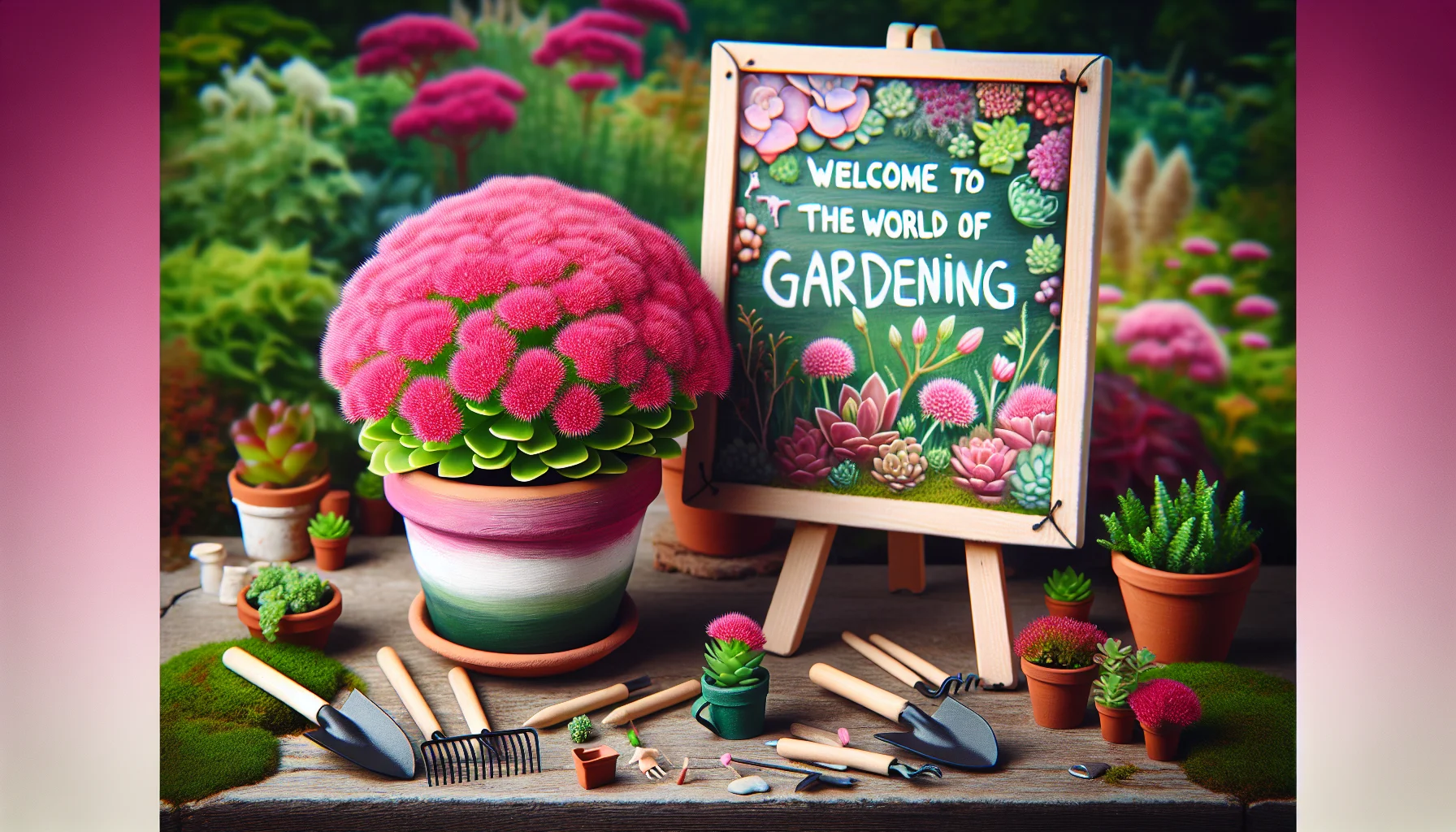Pink sedum Quiz
Test Your Knowledge
Question of
Introduction to Pink Sedum
Pink Sedum, also known as Stonecrop, is a versatile and hardy perennial plant that thrives in a variety of conditions, making it a popular choice for gardeners around the world. Its ability to withstand drought and poor soil, along with its succulent leaves and striking pink blooms, have made it a favorite in rock gardens, borders, and as ground cover. The plant's resilience and low maintenance requirements, combined with its attractiveness to pollinators, add to its appeal and significance in gardening. Pink Sedum offers not only aesthetic value with its vibrant flowers but also serves as an important resource for bees and butterflies, contributing to the biodiversity of garden ecosystems.
Types of Pink Sedum
- Sedum Sieboldii
- Sedum Spurium 'Dragon's Blood'
- Sedum 'Brilliant'
- Sedum 'Autumn Joy'
- Sedum Reflexum 'Pink Magic'
How to Plant and Care for Pink Sedum
Planting and caring for pink sedum is straightforward, making it a great choice for gardeners of all levels. To start, choose a location that receives full sun for the majority of the day, as sedums thrive in bright light. When it comes to soil, pink sedum prefers well-draining soil with a neutral to slightly acidic pH. You can improve drainage by incorporating sand or gravel into the planting area if needed. Plant your sedum in the spring to give it plenty of time to establish its root system before winter.
Watering is crucial, especially during the first growing season. Ensure the soil is moist but not waterlogged, allowing the topsoil to dry out slightly between watering sessions. Once established, pink sedum is quite drought-tolerant, requiring minimal watering. This resilience, combined with its vibrant blooms, makes pink sedum a beloved addition to any garden.
Benefits of Growing Pink Sedum
Pink Sedum, also known as Sedum rubrotinctum, offers a multitude of benefits for both the environment and the aesthetics of any garden. Environmentally, Pink Sedum is a drought-resistant plant, making it an excellent choice for sustainable gardening practices. Its ability to thrive in dry conditions reduces the need for frequent watering, conserving water resources. Additionally, Pink Sedum contributes to biodiversity by providing habitat and food for pollinators such as bees and butterflies, which are vital for the pollination of many other plants. Aesthetically, Pink Sedum adds a vibrant splash of color with its striking pink hues, enhancing the beauty of garden spaces. Its unique texture and form can serve as an eye-catching ground cover or an accent in rock gardens, borders, and containers. Growing Pink Sedum not only supports ecological health but also brings visual joy and interest to gardens, making it a cherished choice among gardeners.
Common Problems and Solutions for Pink Sedum
-
Problem:
Leggy Growth
Solution: Ensure the plant receives enough sunlight. If it's too shaded, consider relocating it to a sunnier spot. Pruning can also encourage bushier growth. -
Problem:
Yellowing Leaves
Solution: This could be a sign of overwatering. Allow the soil to dry out between waterings. Ensure the plant is in well-draining soil to prevent root rot. -
Problem:
Pests like Aphids and Mealybugs
Solution: Use a gentle insecticidal soap or neem oil to treat infestations. Regularly inspect your plants to catch any issues early. -
Problem:
Poor Flowering
Solution: This can be due to lack of sunlight or nutrients. Make sure your pink sedum is planted in a sunny location and consider applying a balanced, slow-release fertilizer in the spring. -
Problem:
Frost Damage
Solution: While pink sedum is quite hardy, sudden frost can damage new growth. Protect your plants with a frost cloth if an unexpected freeze is forecasted.
Designing with Pink Sedum
Pink Sedum, also known as Stonecrop, offers a vibrant splash of color and is a versatile choice for any garden design. This hardy succulent thrives in full sun and well-drained soil, making it an excellent option for drought-prone areas. Its bright pink blooms create a stunning contrast against its green foliage, attracting butterflies and other pollinators from late summer into fall. When incorporating Pink Sedum into your garden, consider pairing it with other drought-tolerant plants such as Lavender, Russian Sage, and Ornamental Grasses for a cohesive, low-maintenance landscape. Pink Sedum also works well in rock gardens, as a ground cover, or in borders, providing a beautiful texture and color that complements various garden styles. For a visually striking effect, plant it alongside silver-leaved plants like Dusty Miller or Blue Fescue to highlight its vibrant pink hues. Whether used in mass plantings or as a singular accent, Pink Sedum is a resilient and attractive choice that can enhance the beauty and biodiversity of your garden space.
FAQs About Pink Sedum
| Question | Answer |
|---|---|
| What is pink sedum? | Pink sedum, also known as Sedum rubrotinctum or jelly bean plant, is a succulent plant with chubby, pink-tinted leaves. |
| How much sunlight does it need? | Pink sedum thrives in full to partial sunlight. Around 6 hours of direct sunlight is ideal for vibrant leaf color. |
| How often should I water pink sedum? | Water when the soil is completely dry. Typically, once every 1-2 weeks, depending on the climate and season. |
| Is pink sedum frost tolerant? | No, pink sedum is not frost-tolerant. It should be protected from temperatures below freezing. |
| Can pink sedum be grown indoors? | Yes, pink sedum can be grown indoors provided it has enough light. A south-facing window is a good spot. |
| How do I propagate pink sedum? | Propagate by stem or leaf cuttings. Let the cut end callous over for a few days before planting in soil. |












